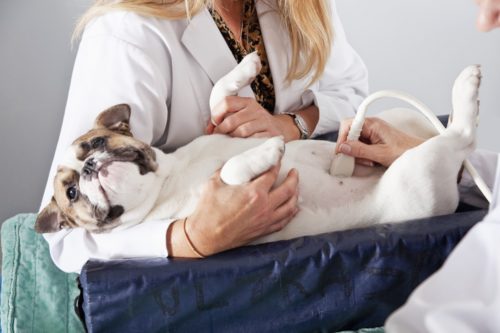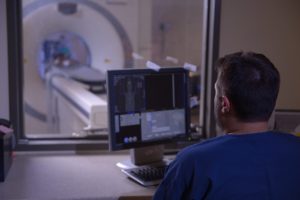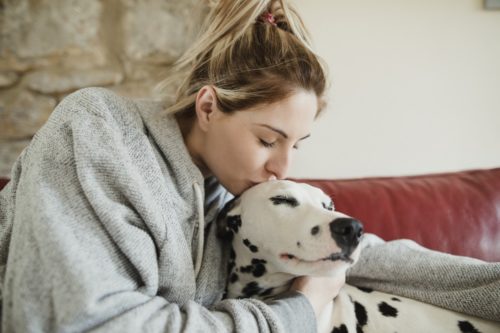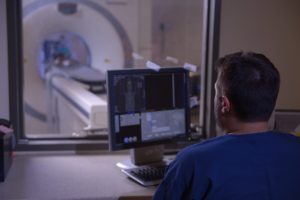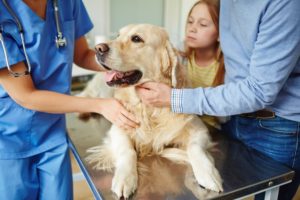’Twas the night before Christmas, and all through the house, not a creature was stirring, not even a—wait a minute, is that Jake and Fluffy, the Jones family’s golden retriever and cat creeping around the house late at night? What could they be up to?
It looks like Jake and Fluffy are quietly sneaking around so they don’t wake their sleeping family and ruin their big night. You see, Jake and Fluffy have been on their best behavior all through the holiday season, and now that it’s Christmas Eve and the big guy is on his way with their presents, they plan to enjoy themselves. Let’s see what they have in mind.
Christmas Tree Catastrophes
Fluffy heads for the Christmas tree that her family so carefully decorated. She has been eyeing the low-hanging bulbs for weeks, and now she plans to play to her heart’s desire. She knocks several onto the wood floor. One shatters. As she jumps away, Fluffy feels a sharp pain in her foot. She licks at the blood that seeps from her cut, and watches Jake head toward the tree stand. The water tastes kind of funny, but he happily laps it up, since his family was busy hosting a Christmas Eve party and forgot to fill his empty bowl. The Christmas tree water may contain dangerous bacteria, mold, or chemicals, but thirsty Jake isn’t too discriminating.
Next, Fluffy pulls some glittery tinsel off the tree. She doesn’t understand why, but the long strands are irresistible, and she eats several. They may cause severe intestinal problems tomorrow, but she can’t help herself now. She moves on to the twinkling Christmas tree lights, and begins chewing on the cord. Her family has left the tree plugged in, since it is Christmas Eve night, and she can’t wait to gnaw through the long strand. Fortunately, as she is about to bite down, she hears Jake rummaging around in the kitchen and goes to investigate.
Holiday Food Fiascos
Jake had to smell the delicious dinner cooking all day long, and was disappointed that his family didn’t share any, but he is thrilled to discover that all the best leftovers are waiting in the trash. His family was too tired to take the garbage out before bedtime, which means that he can feast on turkey skin, bones, gravy, and mashed potatoes. He wolfs down as much as he can find, and licks up the evidence. Poor Jake will probably have a nasty stomach ache tomorrow. Let’s hope he doesn’t develop life-threatening pancreatitis after eating all that fatty food, or an intestinal obstruction, or perforation from the bones.
After his decadent meal, Jake heads straight for the plate of sweets his family has left for Santa. He gobbles them down, and particularly enjoys the chocolate chip cookies and homemade chocolates. He rarely gets to taste chocolate, since his family normally makes such an effort to keep it away from him, telling him it’s “toxic to pets”—whatever that means.
Lastly, Jake sniffs out the treats left in the stockings hanging on the mantle. He pulls one down and finds more chocolate and several packs of chewing gum, which he devours. Hopefully, the gum doesn’t contain the artificial sweetener xylitol, which can cause life-threatening hypoglycemia or liver failure.
Houseguest Hazards
Fluffy eats a few turkey scraps with Jake, and then wanders down the hallway into the guest room where Grandma and Grandpa are sleeping. She hopes to find the bottles of little round tablets she spotted earlier that looked like fun. She easily locates the pill bottles in the open suitcase, grabs one in her mouth, and runs down the hallway, where she chews the cap off, and eats a few of the small round pills before deciding they are too bitter.
Fluffy leaves the pills on the floor, and heads to the back door, which one of the kids has left cracked open to ensure Santa can get into the house. She slips her paw into the crack and is able to open the door wide enough to fit through. Jake hears her, and noses the door open wider so he can also slip through, and they head out into the night. They wander down the street, but head back when they see the first morning light so they can rest up before tomorrow’s festivities. Thankfully they didn’t get lost or, worse, hit by a car.
Jake and Fluffy had quite a night, and they may end up in the emergency room tomorrow, which will surely scare their owners and interrupt their holiday fun. If their owners would prevent these holiday dangers, they would have a safe, healthy holiday together.
To prevent a holiday pet emergency, follow these tips:
- Pet-proof the Christmas tree — Hang breakable decorations on higher branches, tuck all cords out of reach, and keep the tree stand covered so your pet cannot drink tainted water. Cats love to eat tinsel, so skip this nostalgic decoration if you have a feline friend in your home.
- Ensure pets cannot get into dangerous or toxic foods — Fatty leftovers from your holiday dinner can cause a severe case of gastritis or pancreatitis, which may require hospitalization. Toxic foods, such as chocolate, raisins, macadamia nuts, and xylitol, can cause life-threatening complications if your pet eats them, so stick to pet food and pet-safe treats, and don’t leave human food put where your pet can eat it.
- Alert guests to your pet-safety house rules — Ask guests to keep all personal belongings, including prescription and over-the-counter medications, safely out of your pet’s reach. Let them know not to feed your pet any human food, and that you will take care of your pet’s potty breaks, so they don’t accidentally let her out into an unfenced area where she can get loose.
If your pet takes a page from Jake and Fluffy’s story and gets herself into holiday trouble, our emergency department is open over the holidays when your family veterinarian may be unavailable. You can contact us 24 hours a day, seven days a week, for your pet’s emergency care.
 On March 14th, 2020, little Sharkie was rescued from a puppy mill and brought to VRC. He was unable to walk and could not stand without falling over. After running diagnostics, it was discovered that Sharkie was suffering from a fractured spine. Luckily, VRC’s Physical Rehabilitation nurse, Ash, took Sharkie in as a foster and started working with him to gain his strength and learn to walk.
On March 14th, 2020, little Sharkie was rescued from a puppy mill and brought to VRC. He was unable to walk and could not stand without falling over. After running diagnostics, it was discovered that Sharkie was suffering from a fractured spine. Luckily, VRC’s Physical Rehabilitation nurse, Ash, took Sharkie in as a foster and started working with him to gain his strength and learn to walk.





 Email
Email